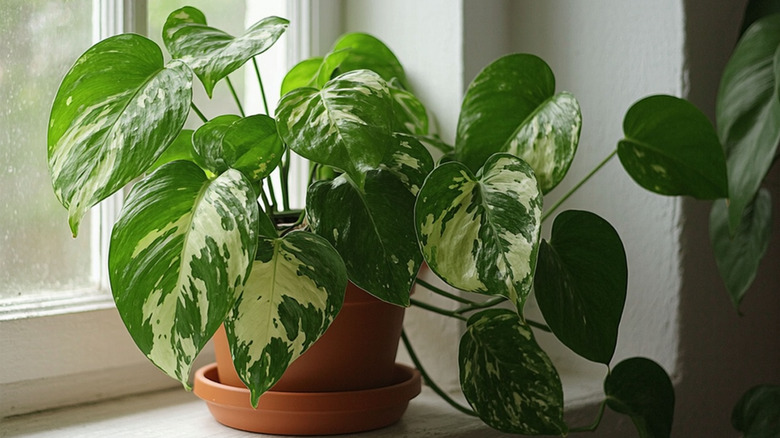The Best Place To Put Pothos Plants To Keep Them Lush & Thriving For Years To Come
Pothos (Epipremnum aureum) are frequently touted as beginner-friendly, low-maintenance house plants that can survive with little sun exposure. Although this is true to an extent, in order to successfully care for pothos plants you'll need to provide the right environment, especially if you want those plants to thrive. For example, to achieve lush foliage that lasts for years to come, placing your pothos in front of an east- or west-facing window that receives bright, indirect light is key.
East- and west-facing windows are ideal as they receive gentle morning or evening sunlight that won't damage your plant. Areas with access to bright, direct light, on the other hand, can burn and discolor pothos leaves. On the opposite end of the spectrum, placing your pothos in a low-light environment can change its characteristic growth. When choosing a window to place your plant near, keep in mind that pothos are toxic to cats and dogs so you should keep your pothos plants away from your pets. Using a macrame hanger is a good way to keep your pothos out of reach while still giving it access to the right window.
Signs your pothos needs a light adjustment
Different varieties of pothos have slightly different needs, but most all of them will benefit from the bright, indirect light available near east- or west-facing windows. If you don't have access to one of these windows in your home or apartment, don't worry. For low-light environments consider getting a "jade" pothos, a variety that is the most tolerant of shade. Artificial grow lights are also an option for indoor pothos plants, just be sure to place your plant roughly 1 to 2 feet away from the lights.
If you're not quite sure if the light conditions you're providing are adequate, look for common signs that your photos are not getting enough light. Your plant might experience stunted growth. Its leaves could grow pale and fall off or grow to a much smaller size. The same leaves could lose their variegated patterns, or your plant could grow mostly vines for a leggy effect.
Of course, it's possible to get too much of a good thing. If your plant is getting too much light you might notice burn spots, brown edges on the leaves, wilting, and brittle leaves. Once you have your lighting correct, be sure to address the other issues you should know about before growing an indoor pothos including over or underwatering, the possibility of root rot, and the prevention of mealybugs.

